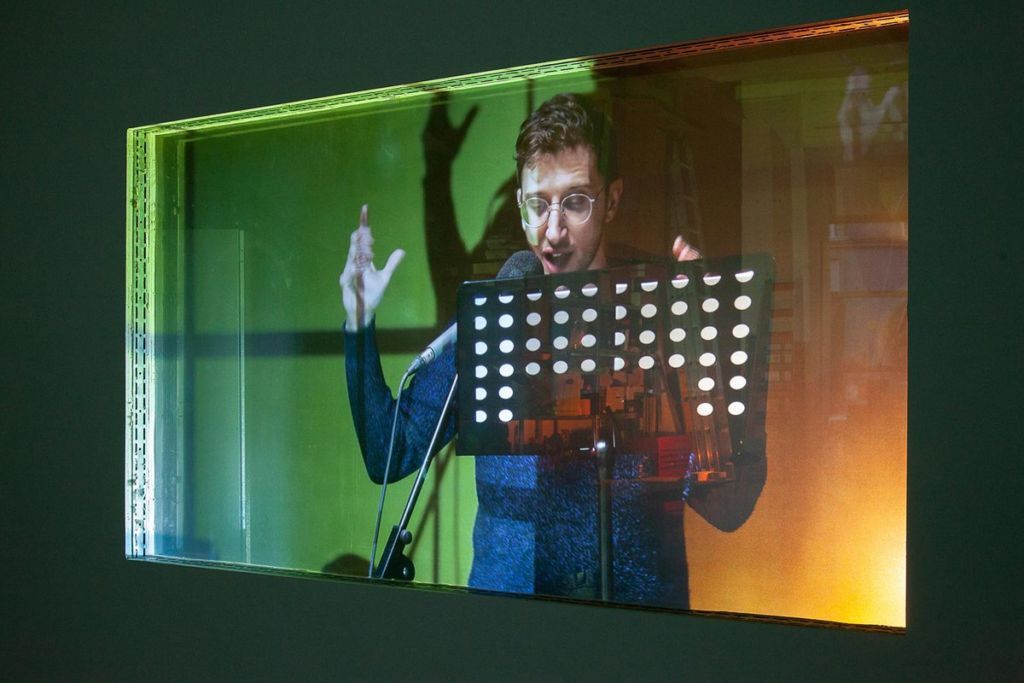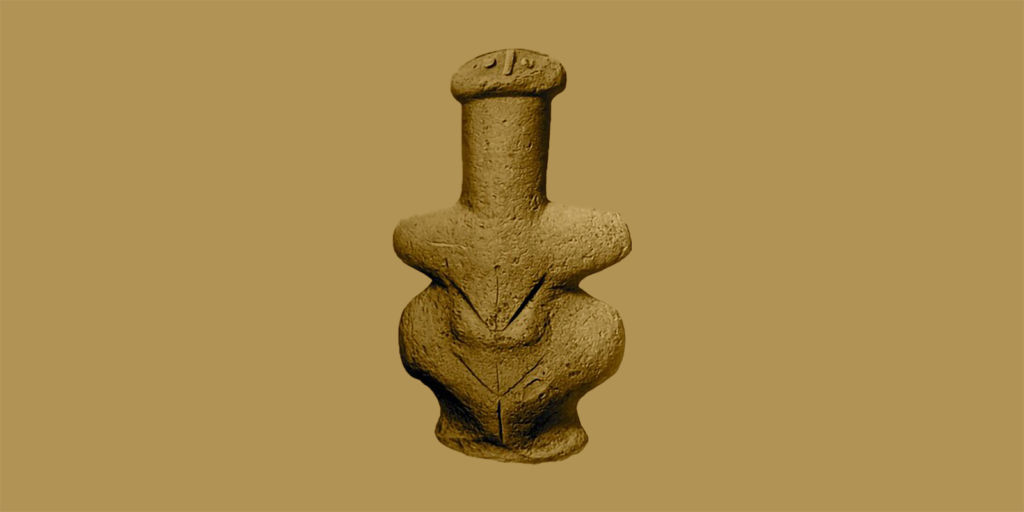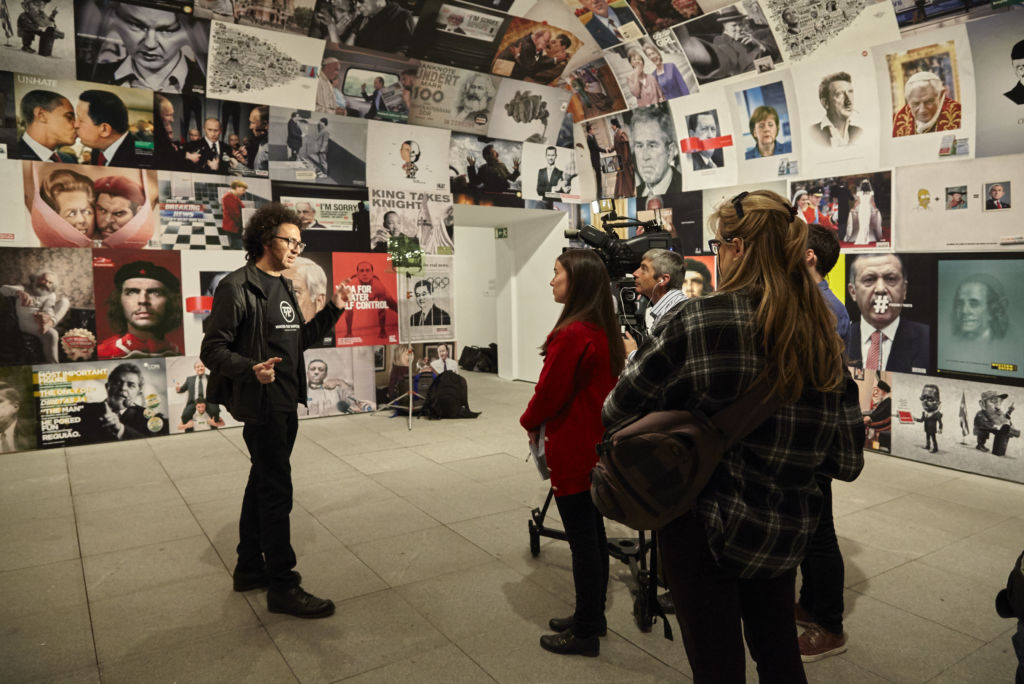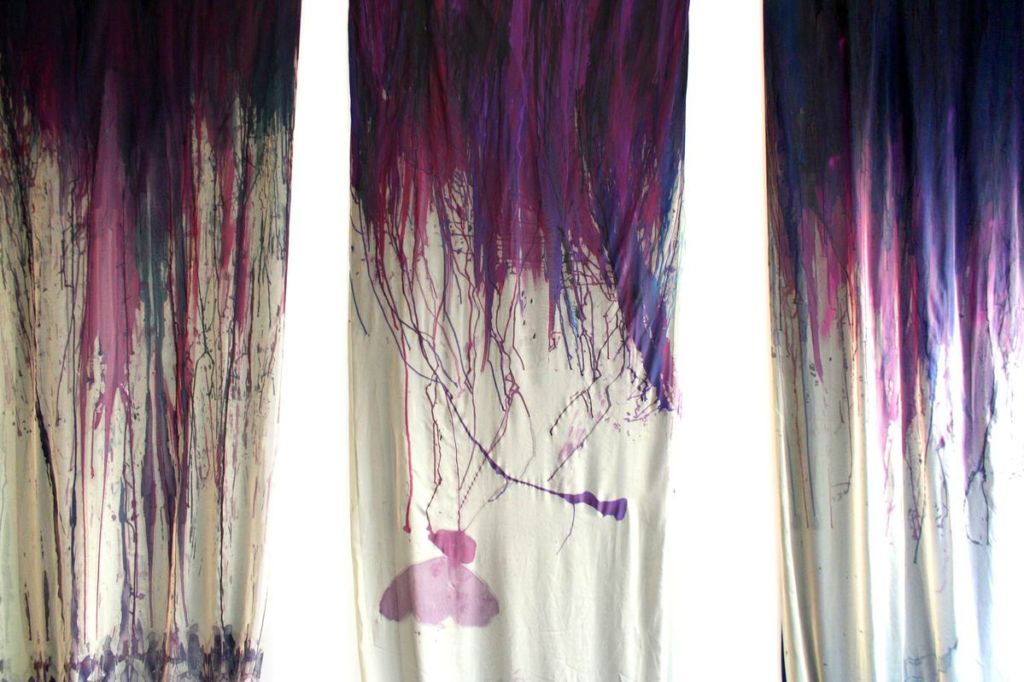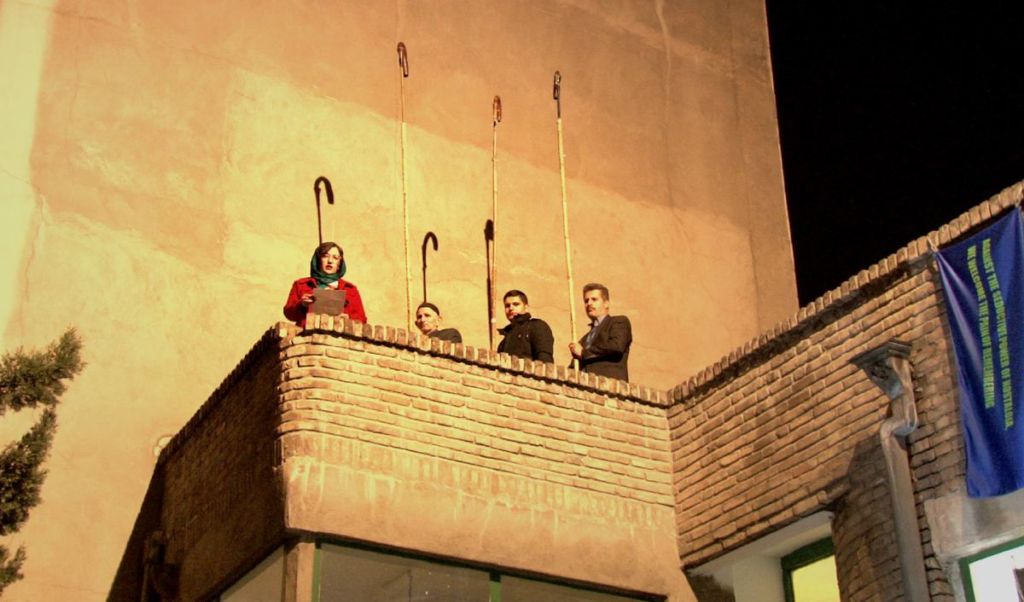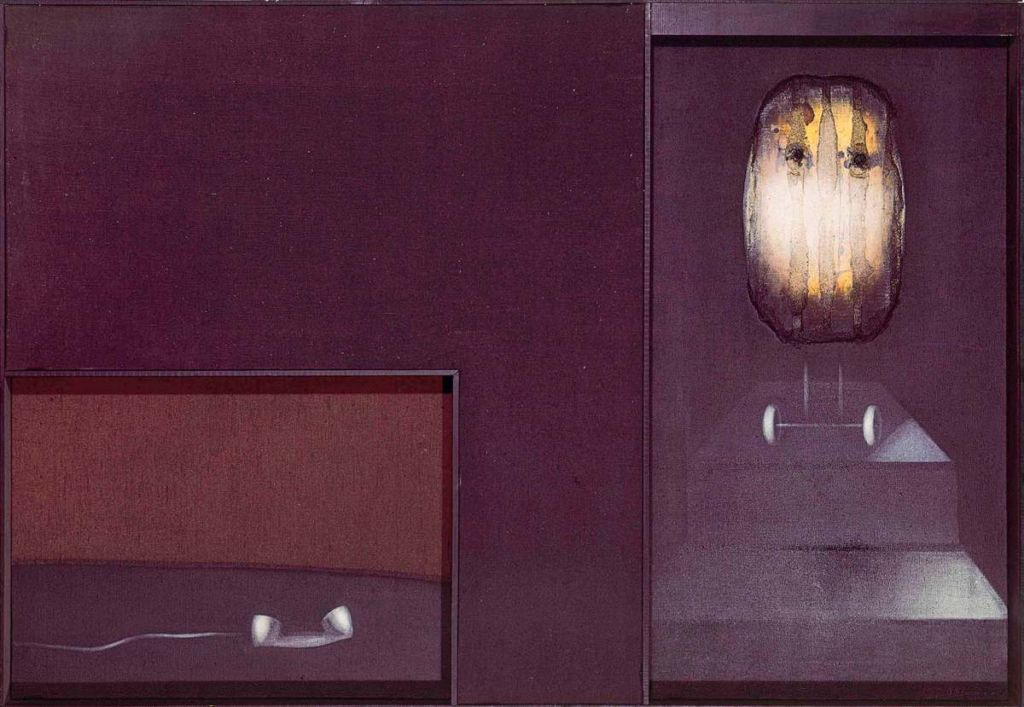After discovering the scale-model of the Nakagin Capsule Tower at the Metz Pompidou Centre in France late 2017, Chloé Fricout and Thibault Capéran visited the Japanese building several times during their artists’ residence in Tokyo. This decidedly utopian architectural project, constructed in 1972 by the Japanese architect Kisho Kurokawa, has been under threat of demolition for several years. Destruction or conservation, the fate of this iconic tower will be decided this autumn.
For further information, https://www.youtube.com/watch?v=aPLH6OgdX0Y
The Metabolist Movement was launched during the World Design Conference in 1960, with the publication of a radical manifesto entitled Metabolism : the Proposals for New Urbanism. Kurokawa and Kikutake founded the Metabolist Movement, along with the architects Masato Otaka and Fumihiko Maki, the architecture critic Noboru Kawazoe, the industrial designer Ekuan Kenji and the graphist Kiyoshi Awazu.
Excerpt from an interview of Kisho Kurokawa by Rem Koolhaas and Hans Ulrich Obrist in Project Japan Metabolism Talks…, Taschen 2011, p 383.
For further information: https://www.cairn.info/revue-espaces-et-societes-2007-4-page-153.htm
We were talking about Ise as an invisible continuity’’extrait de l’entretien de Kisho Kurokawa mené par Rem Koolhaas et Hans Ulrich Obrist dans Project Japan. Metabolism Talks…, Taschen 2011, p. 385.
“Intentional impermanence“, Aki Ishida, “Metabolic Impermanence in the Nakagin in Inflection”, Journal of the Melbourne School of Design, Nov. 2017.
Extract from Capsule Declaration, published in 1969 in SD Magazine. http://www.kisho.co.jp/page/209.html
Extract from Capsule Declaration, published in 1969 in SD Magazine. http://www.kisho.co.jp/page/209.html
Bordered by an elevated highway and two narrow streets, the Nakagin Capsule tower is located in the Ginza neighbourhood in the heart of Tokyo. Composed of two concrete towers on which 140 capsules of identical dimension have been attached, this building’s singular silhouette corresponds to a principle stemming from both Japanese tradition and the most radical innovation: impermanent architecture. Forty-seven years after its construction, we set forth to discover this reference in Japanese architecture and found it completely covered by security nets, like a relic from a flamboyant future perfect.
The Philosophy of Impermanence
Conceived in 1972 by the Japanese architect Kisho Kurokawa, the Nakagin Capsule Tower is one of the rare examples of Metabolist architecture to have been constructed that is still standing. The movement was developed in Post-War Japan, a complex period that brought together a huge shift in identity consecutive to the atrocities of the Second World War, the rejection of early twentieth century Japanese architecture, known as “Giyofu”, based on Western imitation, and the large-scale reconstruction of Japan. Confronted with the injunction from public authority to build tomorrow’s Japan, architects proposed a synthesis between the traditions of their millenary culture and avant-garde movements, driven by strong economic growth. The highlight of the Metabolist movement was the Expo ’70 at the World’s Fair in Osaka1.
Metabolism was initiated in 19602, after the discovery of the DNA double helix, whose pattern was used by Kisho Kurokawa in his project for Tokyo’s extension into the bay, Helix City. But the young architects in the movement were also inspired by Buddhist teachings, namely the idea of Rinne, a concept signifying the “wheel of life”, that brought them to see architecture and urban development through infinite cyclic time. This concept requires a biological form of imagination, through which the Nakagin Capsule Tower can be seen as an architectural tree: the central trunk assembling all the fluids, whereas the capsules, like leaves, form individual habitats with a limited life span.

From top left to bottom right: sketch of K. Kurokawa in Works of Kisho Kurokawa 1970. Nakagin Capsule Tower mailboxes. Construction of the Nakagin Capsule Tower. Helix City of Kisho Kurokawa map; buds; collage shot of Helix City.
In order to transpose the idea of perpetual regeneration in architecture, Kisha Kurokawa developed a biological metaphor, referring to two cultural treasures: the Katsura Imperial Villa and the Ise Grand Shrine. The first was built in the seventeenth century, with three successive periods of construction, followed by the final step of renovation. Kurokawa interpreted this as such: “People always admired the Katsura Detached Palace: they worshipped it during the first phase, then when the second phase was completed they said it was perfect beauty, and then again after the second extension. At each stage, people said it was perfect beauty. (…) Perfect as a constantly changing process. Impermanent beauty, immaterial beauty. So we found a new theory. European beauty was supposed to be eternal, but perhaps we could discover a new aesthetic based on movement.3” This movement also gives rhythm to the regular reconstruction of the Ise Grand Shrine. The Shrine is one of Shinto’s most sacred sites, entirely destroyed and reconstructed every twenty years4. Today’s temple, built in 2013, is the 62nd version. “We were talking about Ise as an invisible continuity,”5 explained Kurokawa. Where Western culture emphasizes original materials over the tangible and the visible, the Japanese are attached to the site itself and to the transmission of gesture and know-how. In this manner, the Metabolists stand up to European architecture by proposing an avant-garde solidly anchored in traditional references.
Kisho Kurokawa based the duration of his short-lived habitation capsules on these two examples: twenty years in the case of the Nakagin Capsule Tower. The architect called this “intentional impermanence”6. We are confronted here with programmed obsolescence: renewing habitations on a regular basis in order to restore their equipment. In this light, conserving the Nakagin Capsule Tower is a paradox: the rehabilitation of a building whose principle is continuous transformation.

Bertrand Benoit, Nakagin Capsule Tower. Image © Bertrand Benoit — bbb3viz.com
The scale-model of a society
When we visited the exhibition Japan-ness at the Metz Pompidou Centre in France, the scale-model of the Nakagin Capsule Tower we saw there, unlike the building in Tokyo, had four towers rather than two. The Utopia lying ahead of this scale-model is not one of a single building, but of an urban system and, consequently, an entire society.
For Metabolists, perpetual transformation is intended take place in the heart of the Megalopolis. During the second half of the twentieth century, cities grew uncontrollably at a frenetic pace. The Metabolists’ answer to this problem, which was to become their spearhead, was a type of urbanism combining perennial mega-infrastructures with prefabricated, interchangeable habitations. Thus cities could be developed around horizontal arterial roads and high-rise buildings or ensembles of superimposed terraces destined to accommodate temporary housing units. With two central towers in reinforced concrete and 140 dismountable capsule housing units, the Nakagin Capsule Tower is a perfect example of this type of architecture.
If this type of urban system has not been developed since, the idea of a constantly renewed city is an analysis shared by many contemporary architects. For Toko Ito, the well-known architect and heir to Metabolism, the life of a building is over when it is no longer functional. One of the most famous examples of this is the White U he constructed in 1976 for a private commissioner. Twenty-one years later, the house no longer corresponded to the needs of the family, and the owner, along with the architect, decided to demolish it. Urban regeneration cannot be planned on an urban scale, it is organic and organizes itself around the rhythms of life cycles, or, as one would say today, the rhythms of “usage” cycles of each building. In this sense, the Nakagin Capsule Tower could very well be dismantled in order to construct a building that meets modern standards.
Cyborg architecture
In the seventies, encouraged by a period of unprecedented economic growth, Kisho Kurokawa proposed a planned system of urban development, based on the module of the capsule. With the increasing popularity of spatial research specific to this period, the architect reflected on capsules based on the habitat of the astronaut. “Just as an astronaut is protected by a perfect shelter from solar winds and cosmic rays, individuals should be protected by capsules in which they can reject information they do not want thereby allowing themselves to recover their subjectivity and independence.7”
Like a spatial capsule, the Nakagin habitat is a refuge for modern humans assailed by information. It is the cocoon into which the salary man slips in to sleep, eventually eat, be informed or meditate. Television, tape recorder and telephone: all the most recent technology of information is integrated directly into the studio walls. In 1969, several years before the Nakagin Capsule Tower was constructed, Kisho Kurokawa published Homo movens, an essay in which he theorised this new human being, an “increased” individual thanks to the technological functions of his dwelling, and whose supreme freedom is mobility. The habitat becomes a prosthesis, half way between the snail shell and the microchip embedded under the skin: cyborg architecture.

Nozomi Suzuki, Capsule Obscura, 2014. © Nozomi Suzuki
As our investigation progressed, we understood that each architectural decision was the application in space of a societal utopia. “The capsule is intended to institute an entirely new family system centred on individuals… the housing unit based on a married couple will disintegrate,”8 Kurokawa predicted. The capsule is the tool of urban planning destined to inaugurate a new society. If the Nakagin Capsule Tower testifies to the failure of this goal, Kisho Kurokawa pursued his research on microhabitats, abandoning the idea of mobile housing. In 1979, he inaugurated the Osaka Capsule Inn, the first capsule hotel whose concept then spread throughout the country.
Passing through the door
On the appointed day, we walk into the hall of the Nakagin Capsule Tower. Takami Sugawara, a tenant of one of the capsules, is waiting for us. We follow her up the stairs and into the interior corridor linking the two towers. The sound of leaking water accompanies every one of our steps, and doors locked out of service due to the danger of collapse succeed one after the other in this vertical labyrinth. The only signs of habitation are several pairs of shoes on doormats, an umbrella and a snowboard. We stop at one of the doors.
For the first time, we step into a rectangular capsule, measuring no more than ten square metres. The left wall is composed of storage space in white Masonite with the original inlayed electronic devices. To the right, the bathroom is a plastic cabin whose round design recalls a submarine or a spaceship. Finally, we are struck by the most remarkable graphic element: the large round window with such particular dimensions. We seem to be floating over a void, in the outpost of an urban observatory.
We continue our visit, and, thanks to our hostess, several inhabitants welcome us into their capsules.

Noritaka Minami, Model, 2010. A small model of the tower was handed out to commemorate the opening of the building in 1972. © Noritaka Minami
Among them, Tanaka Shintaro explains that what he found the most difficult was sorting out his belongings before moving into the capsule, because only half of them could be stored in such a small habitat. A year later, his relationship to consumerism has evolved, and he is happy to have these spatial constraints. Simply looking out the window opening out to the Hamarikyu Gardens and the shores of Tokyo Bay widens his sense of space. Before living in the Nakagin Capsule Tower, when he walked by it, he thought of Stanley Kubrick’s 2001, Space Odyssey (1968). Now he lives here, it makes him think of Ridley Scott’s Blade Runner (1968). Tanaka has several tricks up his sleeve to limit the nuisances of insalubrity, the leaks and problems of insulation and ventilation. He firmly believes that the tower should be conserved and rehabilitated, because it is one of the rare historic buildings in the Ginza neighbourhood.
One floor up, Taka Masuda lives in Capsule A805. When we meet him, he has just come back from the collective shower. After the final shutdown of gas due to obsolete installations, the showers were relocated outside the building, in an Algeco module. Taka had rented another capsule before buying the A805 six times less than the price paid by the precedent owner in the nineties. In addition to the low price, Taka appreciates living close to his work and the neighbourhood restaurants. The reduced living space of the capsule corresponds to his ethic choices: fewer objects in order to concentrate on the essential.
Tomoyuki Kawamura bought his capsule on the Internet for a low price. When he discovered it a year later, it was leaking seriously. After renovating it, he moved in, and became used to the dripping. He would like to change his capsule. Apart from a few details, Tomiyuki Kawamura’s capsule looks just like the one photographed by Noritaka Minami and published in his book entitled 1972. Noritaka Minami, a Japanese photographer living in the United States, took photos over ten years of capsule interiors without their inhabitants. The images form a series like an interior portrait of the Nakagin Capsule tower: behind the repetitive modular façade, these interiors reveal a variety of ways of occupying space, challenging Kisho Kurokawa’s idea of serial lodging.
Aya, a young writer, greets us in a capsule that seems empty at first sight. Once we are sitting on the floor, we realize that the folded element is a bed. Behind the front door, small and medium-sized Muji boxes are the only storage elements. As an adept of the teachings of Zen, Aya only lives with the essential. In 2010, she discovered the Nakagin Capsule Tower at the Mori Art Museum devoted to Metabolism in Tokyo. After her visit was over, she had decided to live there herself. Ever since, the beauty of the building is a constant source of delight.
Nobuko Nakano considers Kurokawa’s capsules as works of art. She decided to buy one for her art collection. For her, it was a way of passing on to a different scale, one of architecture, in which she could merge and withdraw from the world. She rarely goes there, but the sensation of being like a foetus in her mother’s womb stays with her.
Fascinated by the building, Tadayuki Maeda bought his first capsule because he wanted to enter the tower. In 2010, he created the Nakagin Capsule Tower Preservation and Regeneration Project, and started to work on the tower’s rehabilitation, accompanied by a group of habitants. In addition to mediatizing the tower and calling on public authorities, Tadayuki renovates his capsules and rents them, gradually repopulating the tower and gaining voices within the condominium council. As an advertising professional, he also highlights the touristic and economic aspects of the building. Brad Pitt, Keanu Reeves and many other celebrities have already visited the tower, reaffirming its status as an architectural icon.
However, many habitants have chosen to reside in this building because the absence of hot water, gas, air conditioning and insulation have all lowered the price of rent. The tower has become a vertical, almost marginal island in the heart of the Ginza neighbourhood, where real estate prices are among the most expensive in the world. There are 140 apartments in the Nakagin Capsule Tower. Thirty are used for accommodation, forty as offices, thirty as hobby rooms, and the remaining forty are insalubrious and unoccupied. The dilapidated state of the tower and its location in the Tokyo hyper-centre have attracted the interest of real estate promoters, who see the value of the land occupied by the building as a profitable investment.

Noritaka Minami, the exterior of the Nakagin Capsule Tower as it appeared in 2015. Photograph of the series 1972. © Noritaka Minami
The destiny of an icon
In 2007, an investor proposed to demolish the Nakagin Capsule Tower and construct a new building in its place, offering better standards for the common parts and larger surface areas per apartment. He obtained the agreement of 80 % of the owners, the minimum necessary to demolish the building. In Kurokawa’s eyes, the Nakagin Capsule Tower corresponded to a liberating form of Utopia, even though the living quarters are decisively constraining. The autonomy of the capsules has led to rigid living conditions: the central towers contain all the circulation of fluids, and are inaccessible to individuals in need of reparations. Capsule interiors cannot be transformed to receive modern comfort (insulation, kitchen equipment…), neither may they be adapted to eventual changes in the owner’s situation. The apartments are totally autonomous, destined for one person only, in addition to their deteriorated state. When the dismantling of the tower was just about to take place, Japan was struck by the sub-prime crisis, and the demolition company went bankrupt. And so the tower is still standing.
In 2018, the Nakagin Group, the property developer at the origin of the tower’s construction, transferred the ownership of their shares to the young company CTB GK, which obtained the votes necessary for the tower to be demolished. However, the company was then confronted with a new form of resistance coming from cultural heritage issues, whose influence, although apparently minimal, had been growing since 2010, in spite of the extreme financial pressure. Increasing interest in the work of Kurokawa, the Metabolists and modern Japanese architecture gave birth to reportages in Japan and all over the world. In 2019, the prestigious Pritzker Prize of Architecture was awarded to Arata Izokati, another Japanese artist who had participated in the Metabolist movement. Thirteen years after the Nakagin Capsule Tower was nominated on the World Heritage List by Docomomo Japan, warnings have been issued by this same institution in 2019 concerning the eventuality of destroying this emblem of Japanese architecture, and it has been added to the List of World Heritage in Danger. Increasing interest in Kurokawa’s edifice corresponds to an evolution in the Japanese conception of contemporary heritage, in addition to the tower’s international fame. In July 2019, Jiji Press, a Japanese general press agency, announced that the fate of the Nakagin Capsule Tower has not yet been decided, and could be so this Autumn, after negotiations with a foreign company and the recent land purchaser<9.
If the battle for the preservation of the Tower is won, another one will have to be fought over the modalities of its rehabilitation. Should the original state of the building be recreated, against the principle of continuous transformation? Or should a contemporary architect be summoned to redesign the capsules and adapt Kurokawa’s ideas to our era? The forthcoming discussions will be lively. In addition to its heritage value, the Nakagin Capsule Tower is a source of reflexion for vital contemporary challenges: densification of urban centres, transformation of family units, individual urban habitat, urban mobility, sustainable architecture, etc… Roaming through the tower, walking up and down the stairs, and spending time in a capsule are sensitive ways of envisaging Kurokawa’s answers to these problems. The philosophical, spatial lesson to be learned by this experience would be lost if the tower were to be drastically transformed. However, transformation is necessary in order to make the edifice healthy and comfortable once more. Apartment building or museum? The modalities of the rehabilitation of the Nakagin Capsule Tower will depend on the functions that will be assigned to it.
The aura of the tower also comes from the popular references that have accompanied it from the beginnings of its construction. Kisho Kurokawa was a prodigious young architect with an elegant silhouette. He often posed for fashionable magazines, and was no stranger to the media world and its workings. He was the first communicator of his architectural projects, inaugurating the Nakagin Capsule Tower with the slogan: “The dawn of the capsule age”. Kisho Kurokawa developed a narrative to accompany the construction of the tower, a form of storytelling elaborated on traditional and futurist references. The Ise Grand Shrine, the Katsura Imperial Villa, Buddhist philosophy, new technology, the advent of the Cyborg, spatial missions, DNA… Kisho Kurokawa erected a building bathed in these shared forms of imagination, skilfully relayed by the expanding mass media. He gave the Nakagin Capsule Tower its ever-present evocative power.

Photograph published in Invisible City, Pierre-Jean Giloux, Zéro2 and Solang éditions, Paris, 2018. In the foreground a reenactment of Arata Isozaki’s City in the Air. © Pierre-Jean Giloux
The Nakagin Capsule Tower is a source of inspiration in cinema, contemporary art and graphic novels. In Invisible Cities: Metabolism Part 1, the first of an urban quadritpych, French artist Pierre-Jean Giloux imagines what Tokyo would have been like had the many Metabolist projects been constructed throughout the Megalopolis. In an aerial ambulation, mixing synthetic imaging and video footage, the artist plunges us into the atmosphere of a recognizable city, although we discover buildings that have never been constructed and that spring to life: the buildings of Kisha Kurokawa’s Helix City and Arata Isozaki’s City in the Air blend into today’s Tokyo to such a degree that the Shizuoka Press and Broadcasting Centre by Kenzo Tange and the Nakagin Capsule Tower are indistinguishable from the imaginary buildings. We walk through Tokyo among architectural ghosts and real edifices. The future of the Nakagin Capsule Tower may indeed lie in this blurred space in which the accumulation of images replaces the building’s real existence.
This research / residence was supported by TOKAS (Tokyo Art and Space) and the Institut français in Tokyo in 2018.
Translation by Emmelene Landon
Cover: Nakagin Capsule Tower. © Laika ac


